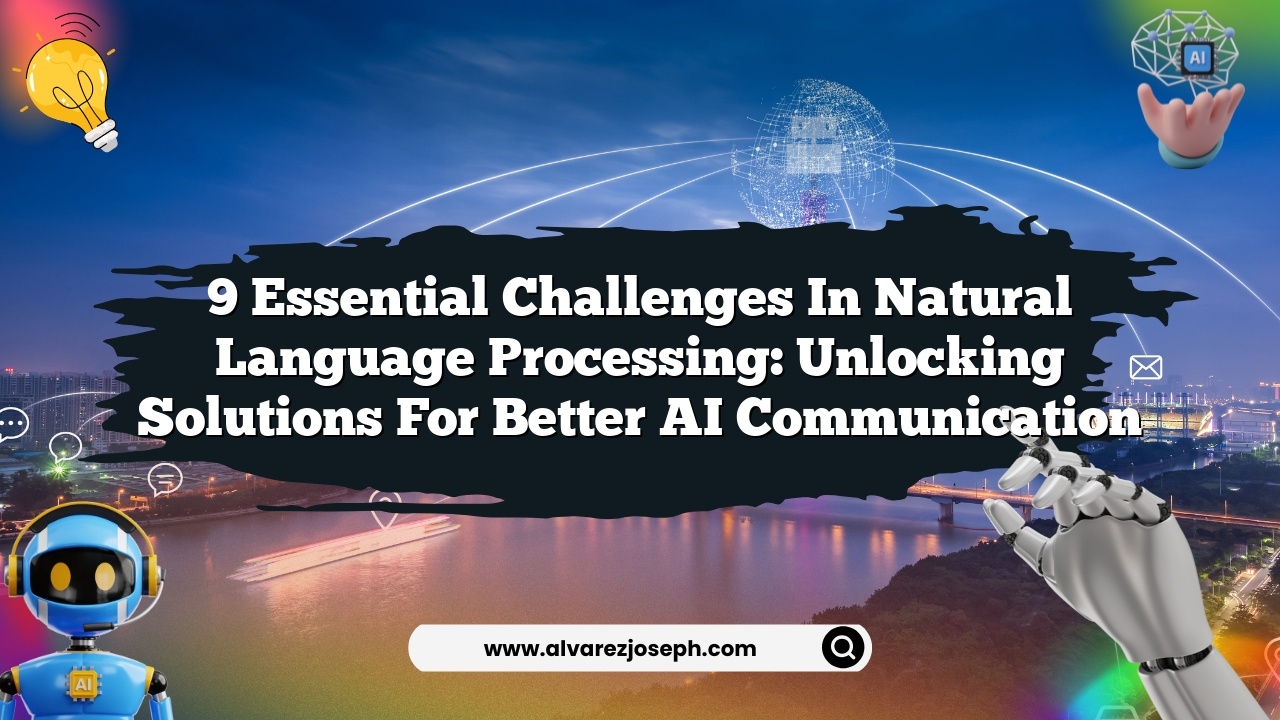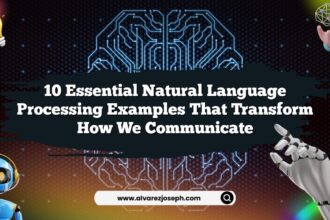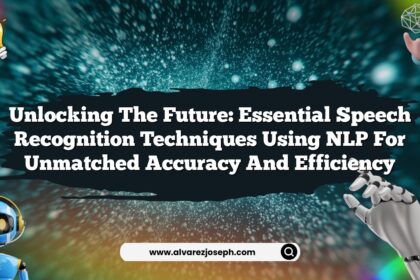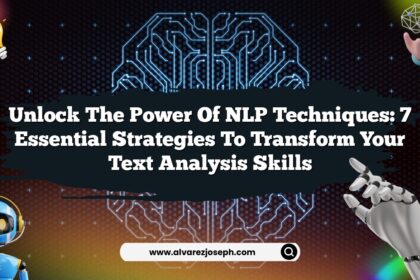Imagine a world where computers not only understand our words but grasp the nuances of our emotions, cultural references, and even the occasional sarcasm we sprinkle into daily conversations. Sounds like science fiction? Welcome to the realm of Natural Language Processing (NLP), a fascinating field that’s becoming the backbone of our communication with machines. Yet, as we stand on the brink of this transformative technology, several challenges remain that slow down its potential. Let’s dive into the 9 essential challenges in NLP and explore how we can unlock solutions for better AI communication.
The Challenge of Ambiguity in Language
One of the most significant hurdles in NLP is ambiguity. Just think about it – the word "bark" can mean the sound a dog makes or the outer covering of a tree. Context is key, and machines often struggle to decipher it. This difficulty leads to misinterpretations and confusion, especially in chatbot conversations or automated customer service.
To tackle this, researchers are using advanced models that analyze broader contexts, such as surrounding sentences or even previous interactions. By employing machine learning algorithms, we can train models to better understand context, minimizing the chances of miscommunication. But there’s a catch; not all contexts are straightforward. What happens when humor or cultural references come into play?
Cultural Nuances and Context Specificity
Speaking of cultural references, let’s embrace the elephant in the room: cultural nuances. Language is rich with idioms, slang, and expressions unique to specific regions. For instance, what does “kick the bucket” mean to someone in the United States versus someone in the UK? While NLP has made strides in translation technology, it often fails to capture the heart of locally embedded phrases.
The solution? Developing more sophisticated models that incorporate cultural knowledge. It’s about more than just translating words; it’s also about translating meaning. This requires extensive datasets that include various dialects and idiomatic expressions. How do we source this data? Collaborating with local linguistic experts and communities could be the way.
The Struggle with Sarcasm and Irony
Imagine this: You’re having a conversation with a friend who just spilled coffee on their shirt, and you jokingly say, "Great job!" A machine, however, might take your words at face value. Sarcasm and irony pose a daunting challenge for NLP. These subtle forms of communication can completely change the meaning of a statement, yet most AI technologies struggle to identify them.
To bridge this gap, we can train models with datasets specifically designed to include sarcastic and ironic statements. By sourcing social media interactions, we can gather examples of sarcasm in real conversations, enriching our models with these nuanced expressions. But this isn’t where the story ends… How do we ensure these models don’t overgeneralize sarcasm and misinterpret genuine compliments?
Data Privacy and Ethical Concerns
As we forge ahead in the NLP landscape, we hit a roadblock: data privacy. With the rise of AI comes the responsibility of ethical data use. The vast amounts of personal data required to train NLP systems often raise privacy concerns. Users are becoming increasingly aware of how their data is used, and companies must tread lightly.
To navigate this issue, we must prioritize transparency and ethical practices. Implementing robust consent protocols that inform users about how their data will be used can build trust. Moreover, using anonymization techniques can help protect individual identities while still allowing for effective data analysis. It’s a delicate balancing act, but it’s crucial for fostering user confidence in AI technologies.
The Limitations of Current Language Models
While we’ve made remarkable strides in NLP, current language models still have their limitations. For instance, they often generate content that is biased or lacks depth. This happens because the algorithms learn from existing data, which can contain societal biases. The result? Outputs that may reinforce stereotypes or fail to represent diverse perspectives.
Addressing this requires a concerted effort to create balanced datasets. By intentionally including diverse voices and perspectives in our training data, we can reduce bias in AI outputs. Furthermore, continuous monitoring and retraining of AI systems can keep them relevant and fair. But here’s the kicker: how can we establish a universal standard for assessing and mitigating bias?
Understanding Emotional Tone and Sentiment
How do you feel when someone misunderstands your tone? Frustrating, right? This highlights another challenge for NLP: emotional tone and sentiment analysis. While machines can identify words and phrases, they often miss the emotional weight behind them. This limitation can lead to miscommunication, especially in sensitive contexts like mental health support.
To improve sentiment analysis, we can leverage emotional intelligence frameworks that consider the emotional context of conversations. By training models on annotated datasets that include emotional cues, we can develop NLP systems that respond more empathetically. But, just imagine if we could also teach machines to adapt their responses based on the emotional state of the user. That would be a game-changer!
The Complexity of Multilingual Processing
In our globalized world, communication occurs across various languages, and NLP must adapt accordingly. However, multilingual processing remains a complex challenge. Creating a universal model that can fluently switch between languages is akin to teaching a toddler to juggle while riding a unicycle!
The solution lies in developing transfer learning techniques that allow models to learn from multiple languages simultaneously. This approach can help streamline the process of understanding and generating text in different languages. However, language intricacies, like syntax and grammar, can complicate the learning process. How do we ensure that the richness of each language is preserved?
Real-Time Processing and Speed
Time is of the essence, especially when it comes to communication. The challenge of real-time processing in NLP systems is one that developers constantly face. In fast-paced environments like customer service, getting responses quickly can make or break user experience.
To enhance real-time processing, we can use more efficient algorithms and optimized hardware. Techniques like model distillation, which reduces the size of a model without losing accuracy, can significantly improve response time. But can we push these advancements further? What if we could shape models that learn on-the-go, adapting their responses in real-time as they engage in conversations?
The Future of NLP: Toward Better AI Communication
As we look towards the future of NLP, the potential for better AI communication is vast. By addressing these challenges, we can unlock a world where machines understand us as well as we understand each other. Imagine a virtual assistant that not only schedules your meetings but also senses your mood and adjusts its communication style accordingly.
This vision can become a reality with ongoing research, collaboration, and innovation. By harnessing the power of diverse data sources and advanced algorithms, we can create AI systems that are not only smarter but also more human-like. The journey may be challenging, but the rewards are worth it.
Quick Summary
- Ambiguity in language creates misinterpretations for NLP systems.
- Cultural nuances require models that understand local expressions and idioms.
- Sarcasm and irony challenge NLP; training with social media data can help.
- Data privacy is crucial; transparent ethical practices build user trust.
- Current language models are limited; balanced datasets can reduce bias.
- Emotional tone should be considered for more empathetic AI responses.
- Multilingual processing needs transfer learning for better fluency.
- Real-time processing improvements can enhance user experiences.
- The future of NLP looks promising with innovations in AI communication.
Frequently Asked Questions
What is Natural Language Processing (NLP)?
Natural Language Processing (NLP) is a field of artificial intelligence focused on enabling machines to understand and interpret human language as it is spoken or written.
Why is ambiguity a challenge in NLP?
Ambiguity arises when words or phrases have multiple meanings, making it difficult for machines to determine the correct interpretation based on context.
How can cultural nuances impact NLP systems?
Cultural nuances include idioms and expressions specific to regions that machines may not understand, leading to miscommunication in translations or interactions.
What role does data privacy play in NLP?
Data privacy is essential to ensure that user data is handled ethically and transparently, building trust between users and AI systems.
How can we reduce bias in language models?
Reducing bias involves creating balanced datasets that accurately represent diverse perspectives and continuously monitoring AI outputs.
What advancements can we expect in the future of NLP?
Future advancements may include real-time processing, better understanding of emotional tone, and multilingual capabilities, leading to more human-like AI communication.
The world of NLP is vibrant and ever-evolving. As we tackle these challenges, we inch closer to creating AI that communicates not just effectively, but authentically. Here’s to a future where our interactions with technology feel more like conversations with friends!












